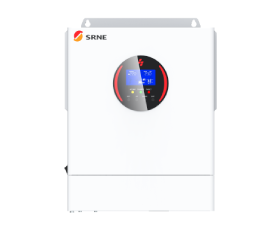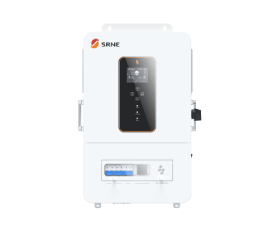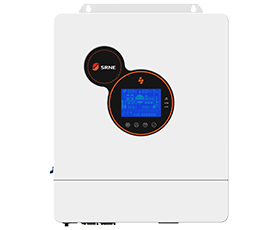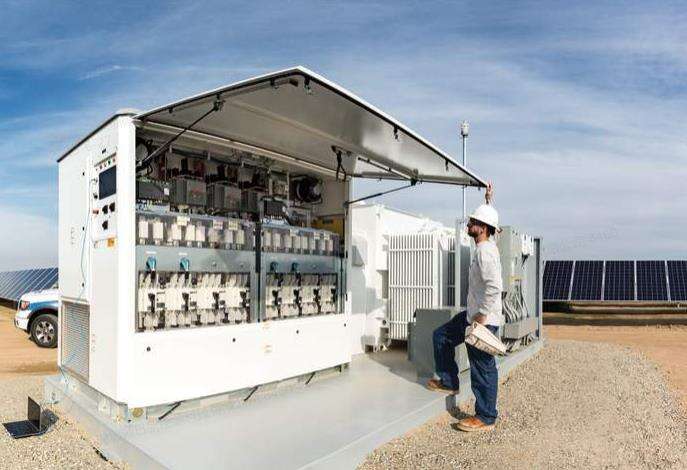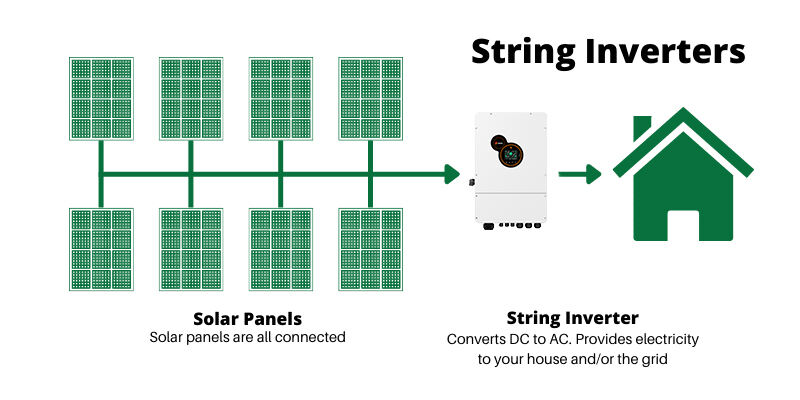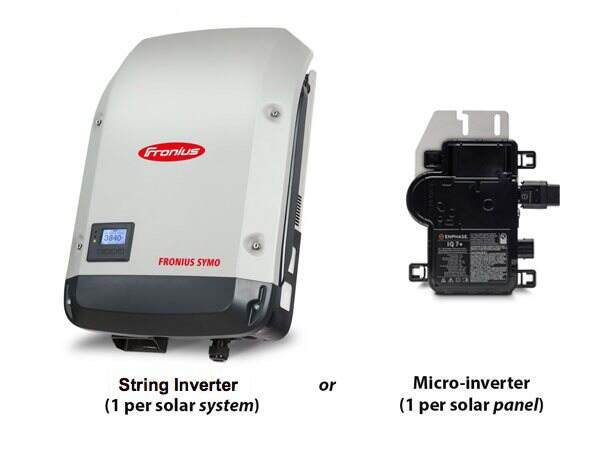Types of PV Inverters
Centralized inverters
Centralized inverters are relatively large in size and low in cost. They are suitable for centralized large-scale photovoltaic power plants on the ground with uniform illumination.
Representative manufacturers: ABB, TBEA, Sineng Electric, Sungrow
The advantages are as follows:
1. High power, small quantity, easy to manage; few components, good stability, easy to maintain;
2. Less harmonic content, high power quality; complete protection functions, high safety;
3. With power factor adjustment function and low voltage ride-through function, the power grid can be adjusted well
The disadvantages are as follows:
1. The MPPT voltage range of the centralized inverter is narrow, and the operation of each component cannot be monitored, so it is impossible to make each component at the best working point, and the component configuration is not flexible
2. The installation and deployment of centralized inverters are troublesome, occupy a large area, and require a dedicated computer room
3. The power consumption of itself and the ventilation and heat dissipation of the computer room are large.
String inverter
The string inverter is based on the concept of modularization, and each photovoltaic string (1~5kw) is connected to the inverter, which has become the most popular inverter in the international market. String inverters are mainly used in small and medium-sized rooftop photovoltaic power generation systems and small ground power stations.
Representative manufacturers: SRNE, Growatt, GoodWe, Deye, SMA
The advantages are as follows:
1. Lower price: Compared to micro inverters, string inverters are usually cheaper and are an economical choice.
2. Simplicity: One inverter can handle multiple solar panels. Compared with micro inverters, string inverters are easier to install and maintain.
3. Durability: String inverters are designed for a long life and are generally more durable than micro inverters.
4. Efficiency: MPPT has a wide voltage range, and the module configuration is more flexible; in rainy days and areas with a lot of fog, the power generation time is long;
5. Volume: Small in size, light in weight, relatively simple to transport and install, small footprint, no need for a dedicated power distribution room, and flexible installation;
The disadvantages are as follows:
1. Shading issues: In a string inverter setup, if one solar panel is shaded, the overall output of the string will be reduced. In the case of microinverters, they optimize the output of each individual panel.
2. Maintenance: Since multiple solar panels are connected to a single inverter, if the inverter needs to be repaired or replaced, the entire system may need to be taken offline, which results in a loss of energy production.
3. Safety: The string inverter is not designed with an isolation transformer, and the electrical safety is slightly worse
4. Stability: The electrical clearance of power devices is small, which is not suitable for high altitude areas; there are many components, integrated together, and the stability is slightly poor
5. Aging: If it is installed outdoors, the wind and sun can easily cause the casing and heat sink to age;
Micro inverter
The micro-inverter is able to realize the connection between the photovoltaic module and the inverter. It has the smallest volume and the smallest power. The common power is below 1kw. With the cooperation, so as to have a higher power generation, but its disadvantage is that the cost is relatively high, suitable for customers in developed countries in Europe and the United States, who have limited installation area but want to pursue higher power generation. In the figure below, the string inverter is on the left and the micro inverter is on the right, so there is a significant difference in volume.
Representative manufacturers: Hemai Electric, Enphase, SolarEdge, Yuneng Electric
The advantages are as follows:
1. Increased efficiency: microinverters can optimize the performance of each solar panel, enabling the entire solar array to generate more power and perform better in shaded or partially shaded situations.
2. Improve safety: micro inverters operate at low voltage, reducing the risk of electric shock.
3. Easy installation: Micro inverters can be easily installed on individual solar panels, eliminating the complicated wiring and installation process associated with traditional inverters.
4. System Monitoring: Microinverters are often equipped with a monitoring system that allows the owner or installer to track the performance of each panel in real time, making it easier to identify and resolve any issues that may arise.
The disadvantages are as follows:
1. Higher cost: micro-inverters are usually more expensive than string inverters, and are suitable for customers in developed countries in Europe and the United States
2. Maintenance: Since each panel has its own inverter, it can be more difficult and time-consuming to maintain and replace individual units.
3. Compatibility: Not all solar panels are compatible with microinverters, and it may be necessary to purchase specific panels to work with this type of inverter.
4. Complexity: Systems with many microinverters can be complex and require more maintenance than traditional centralized inverters, which can be a disadvantage for larger installations.

































